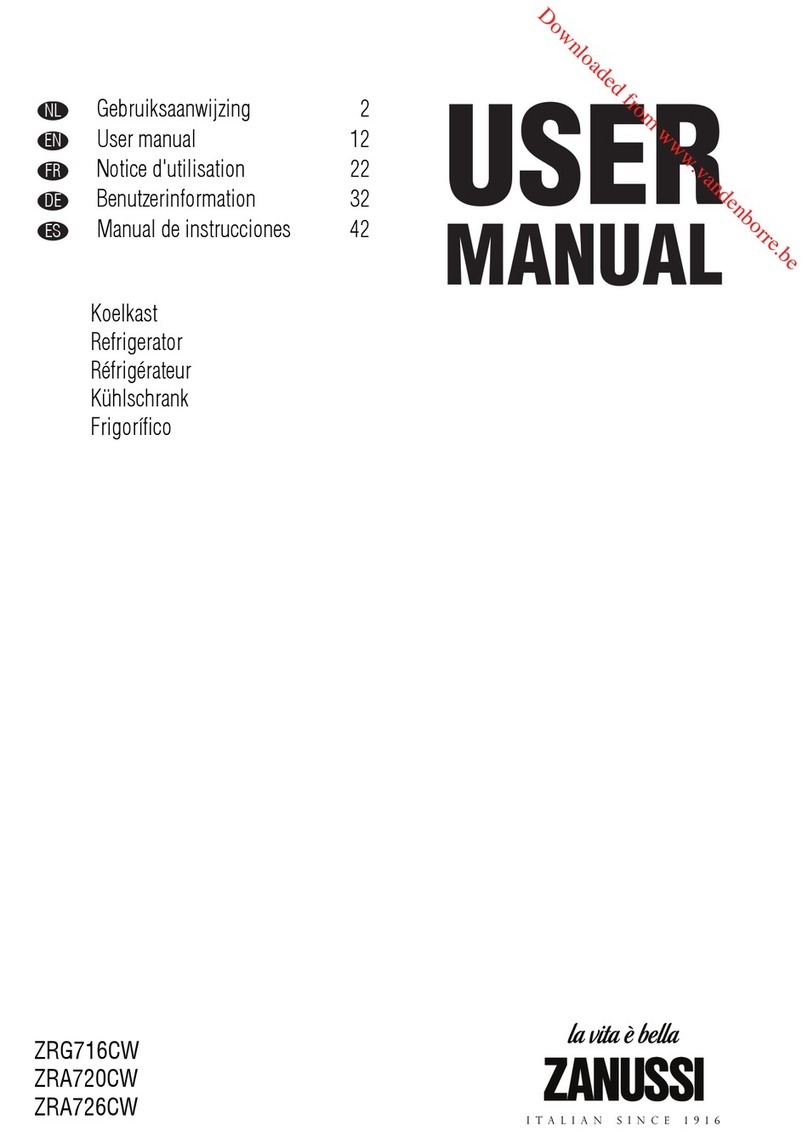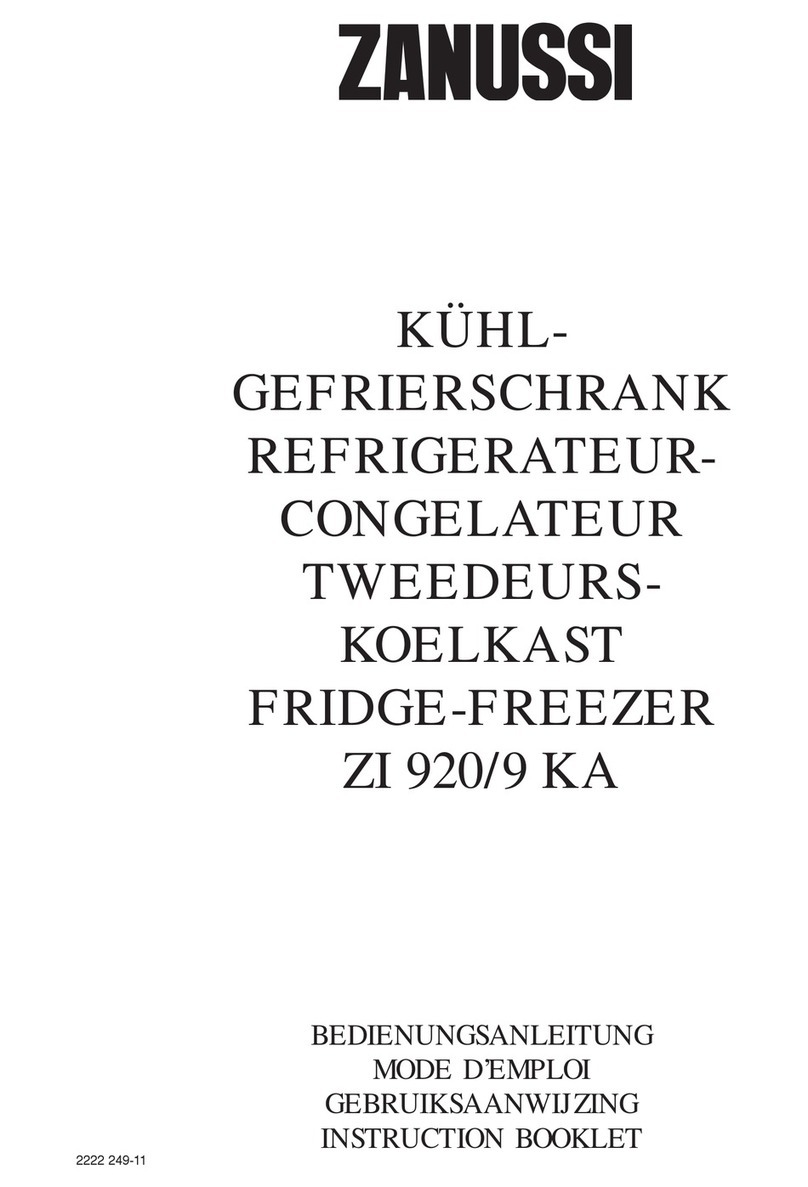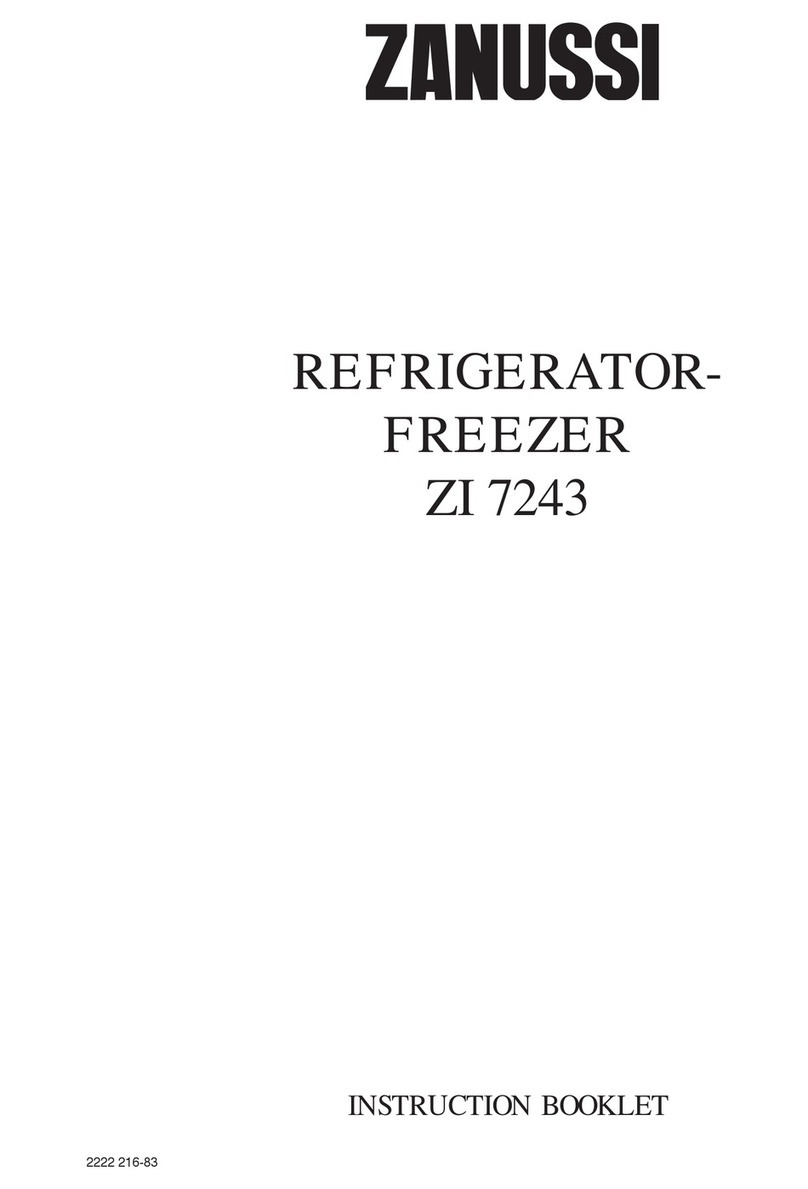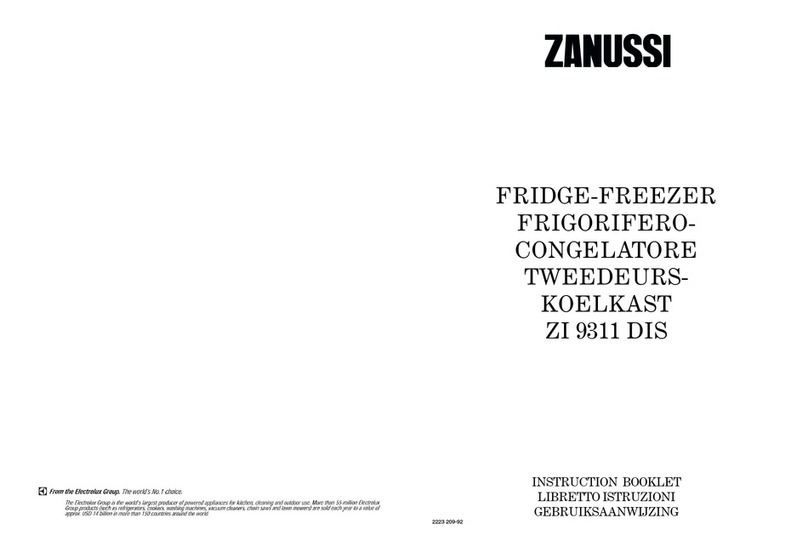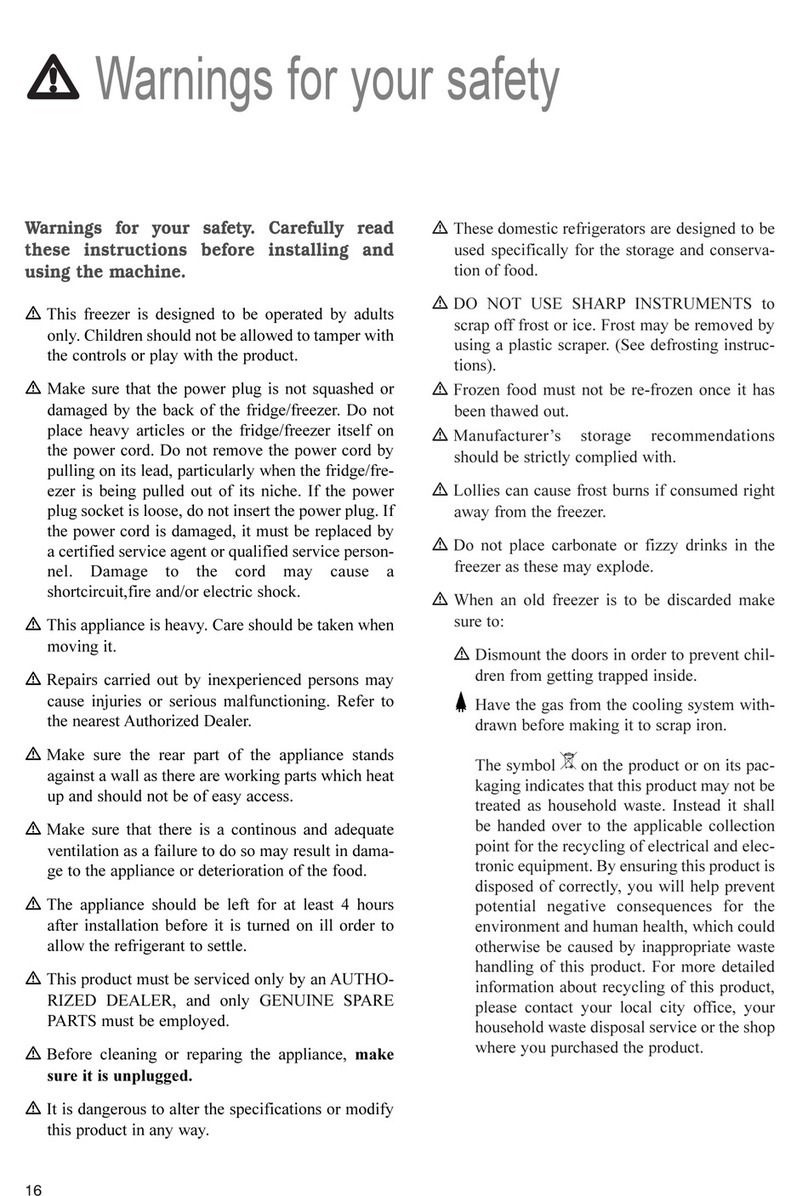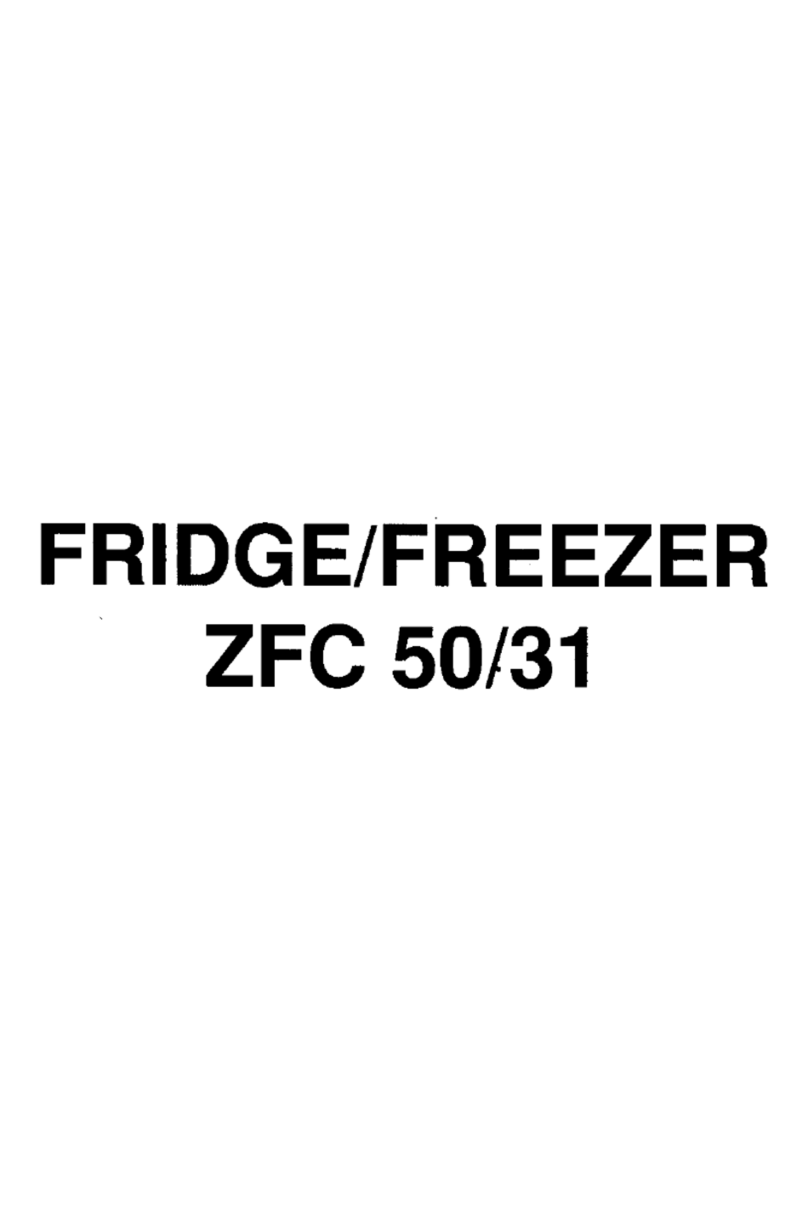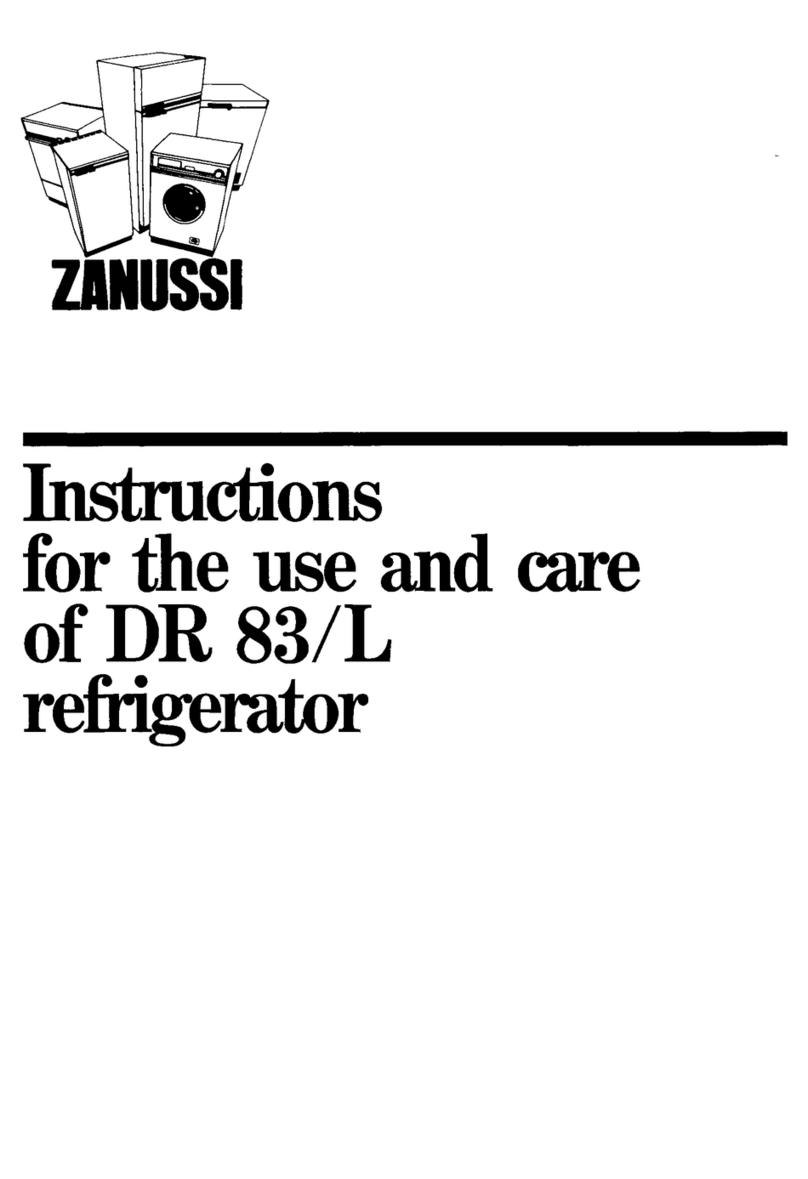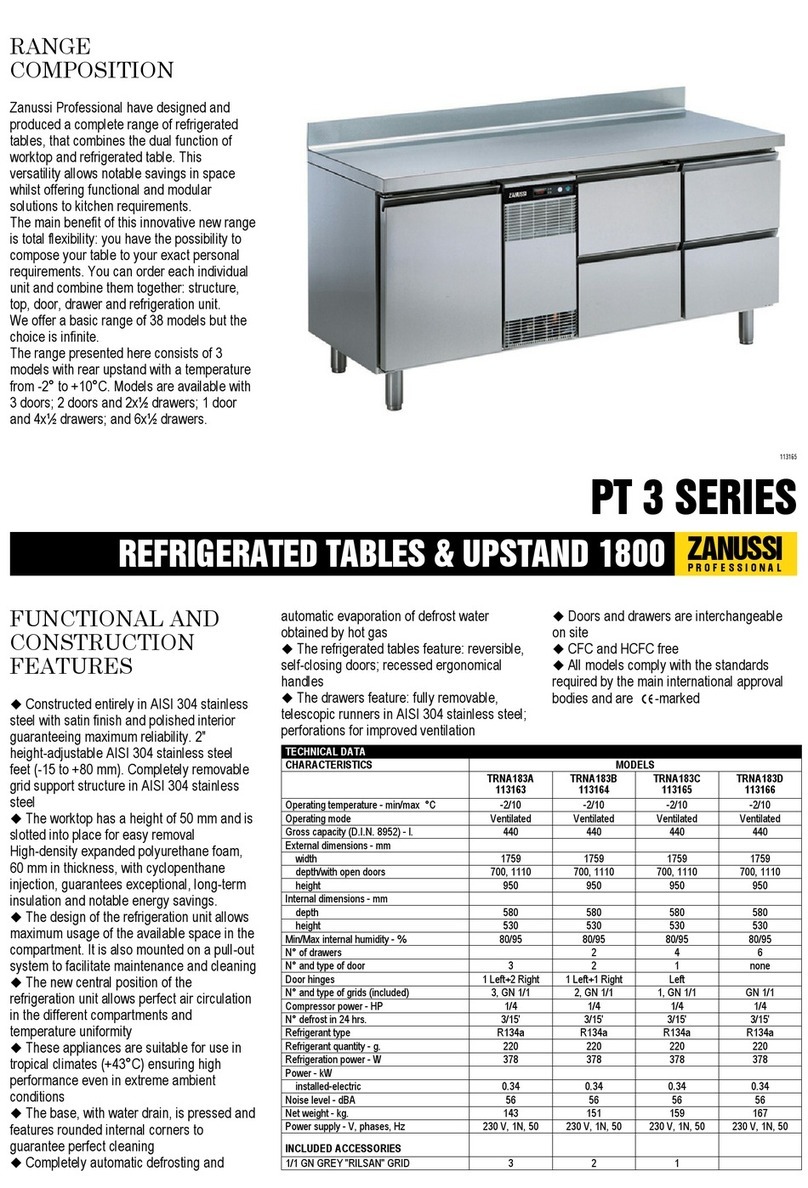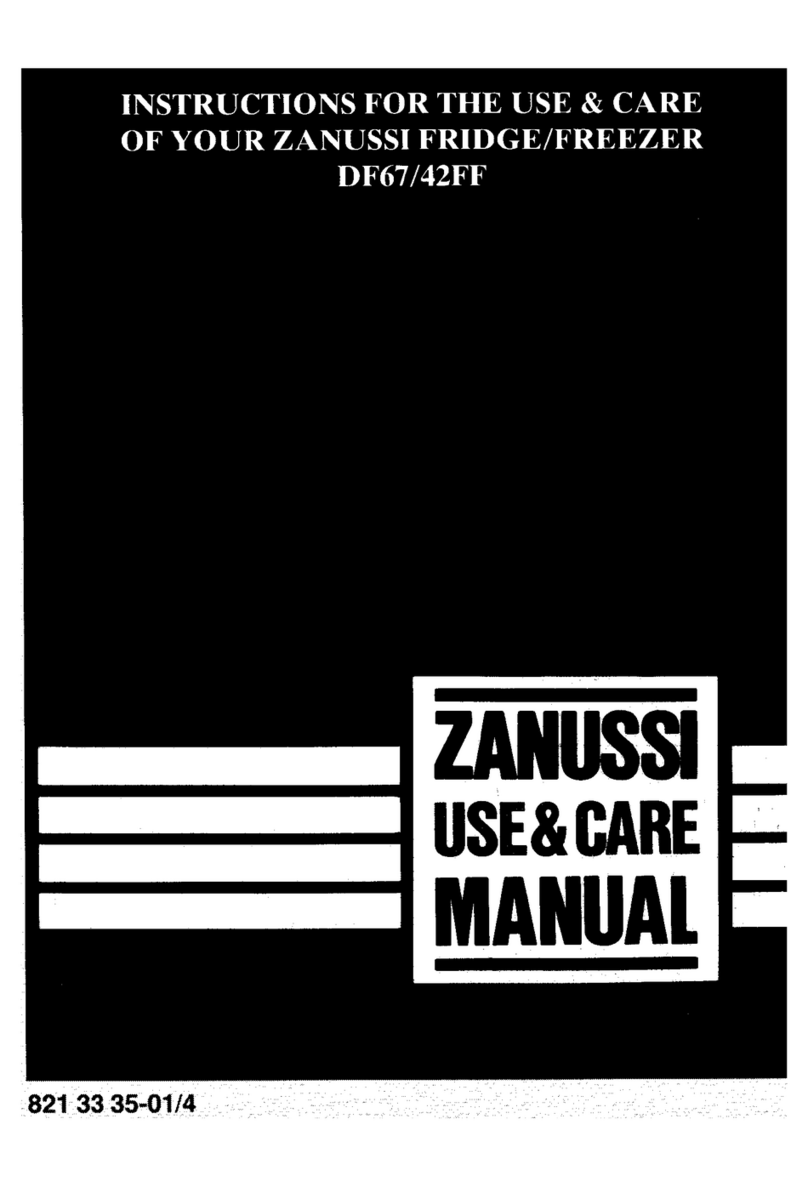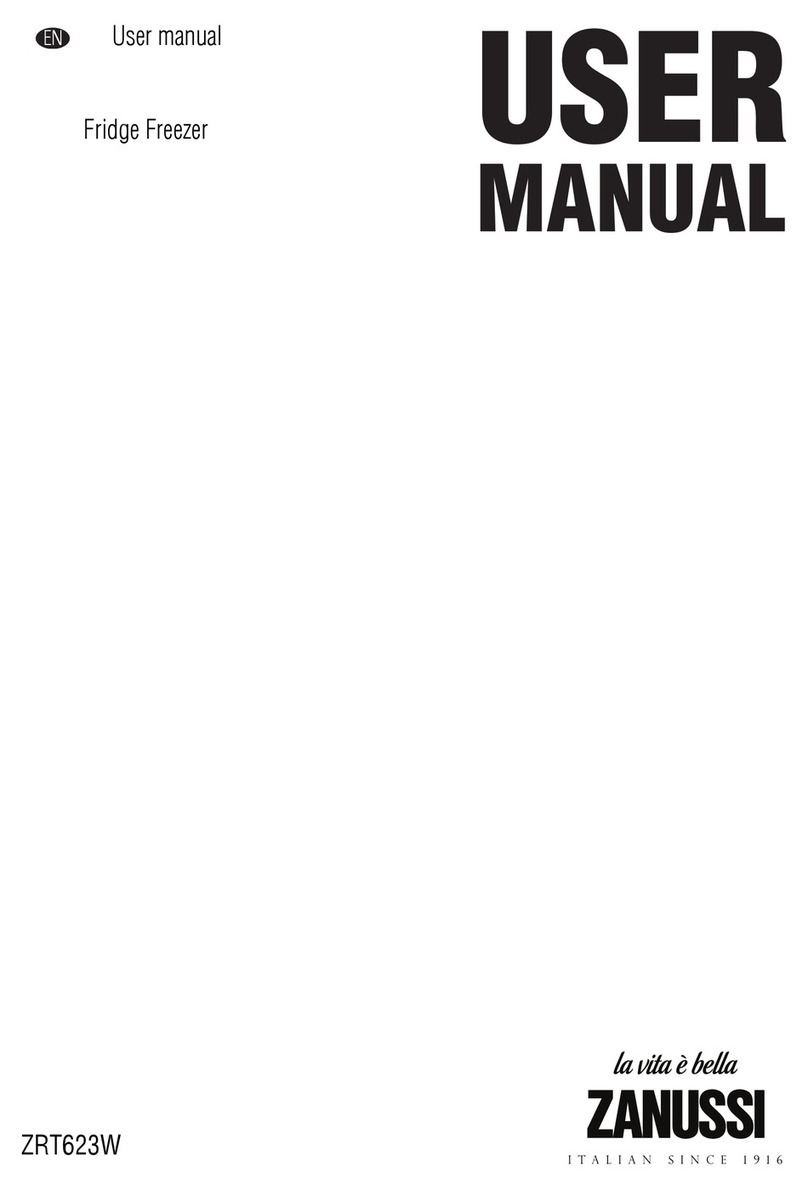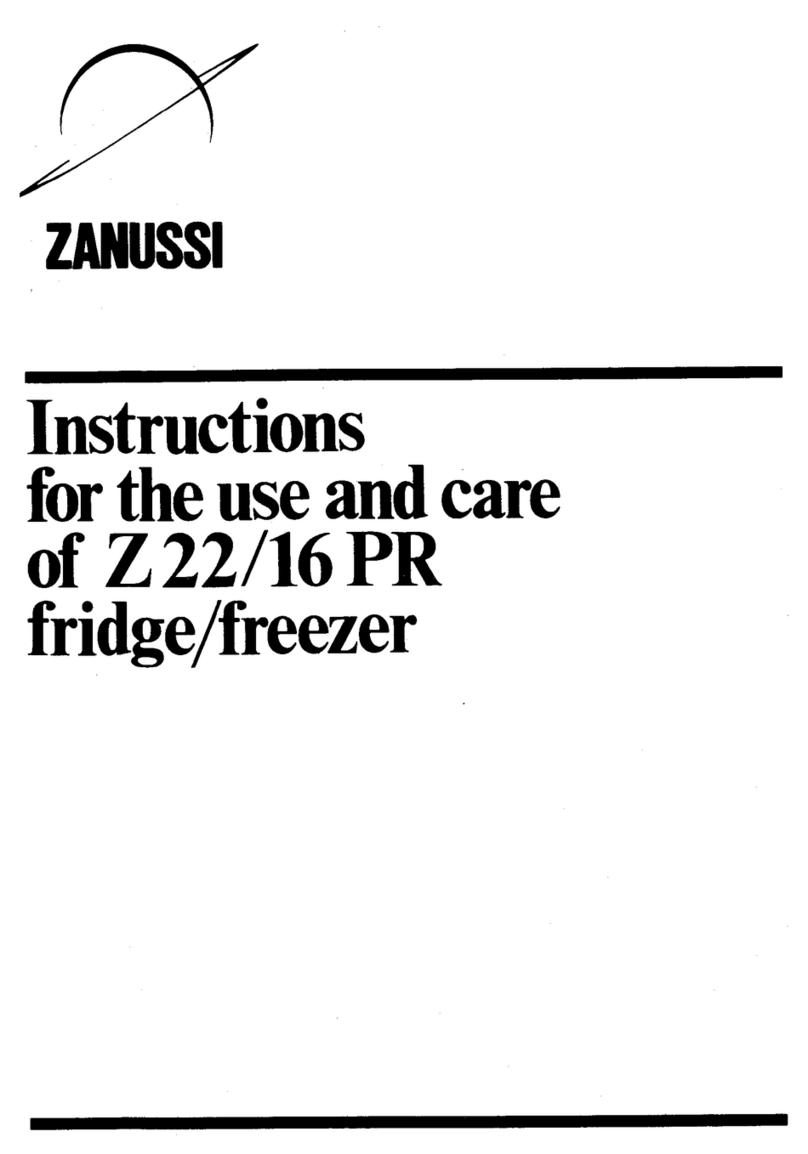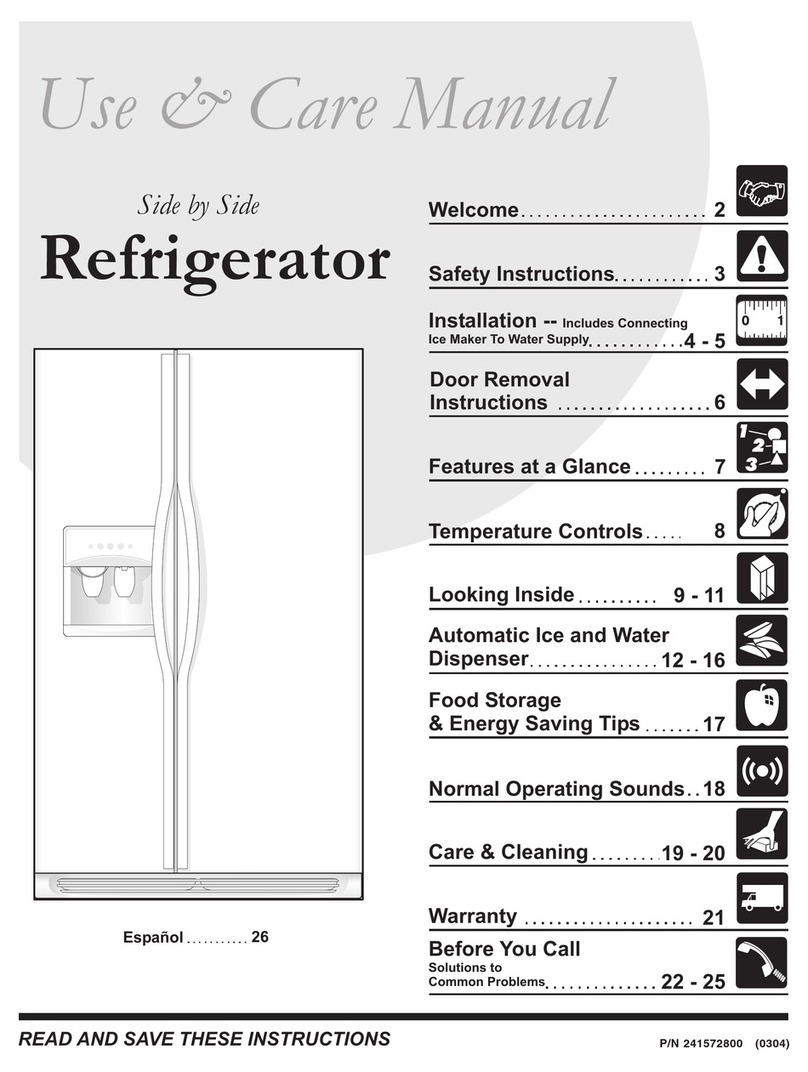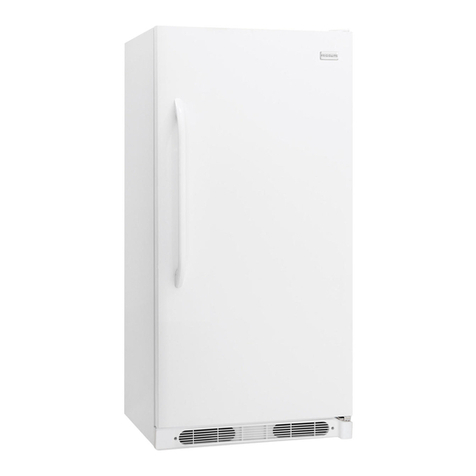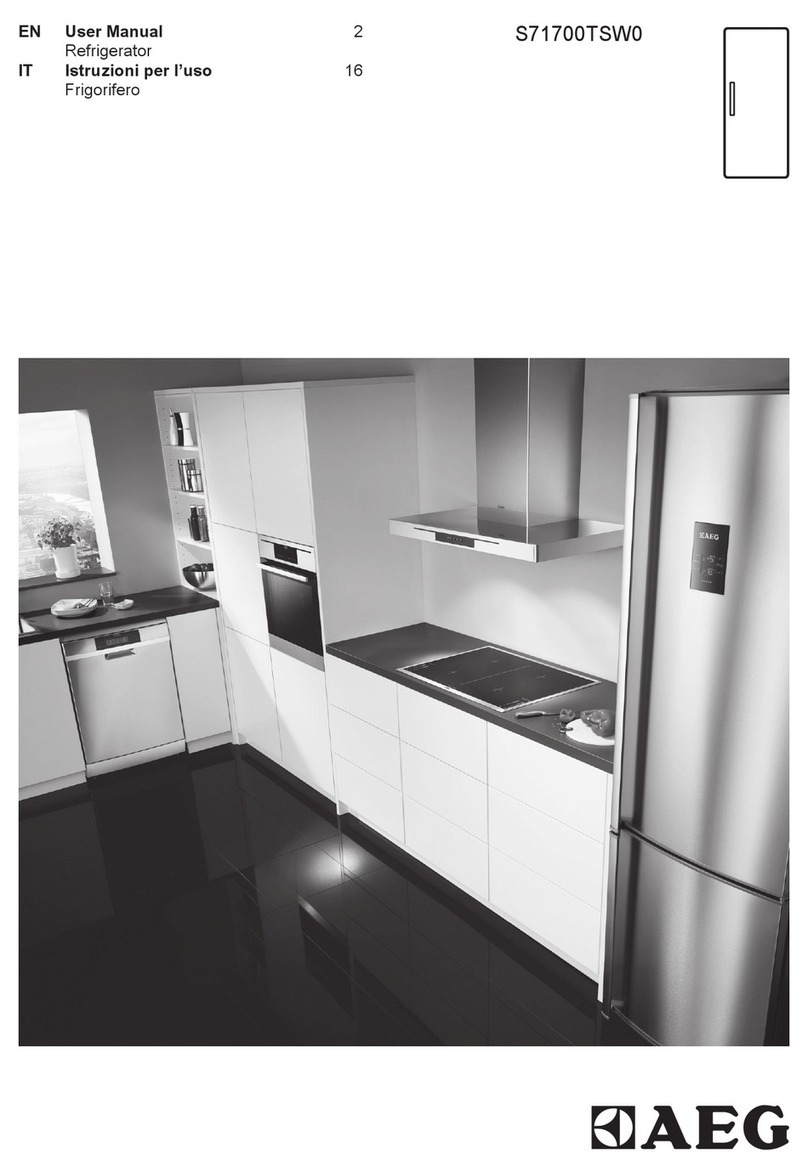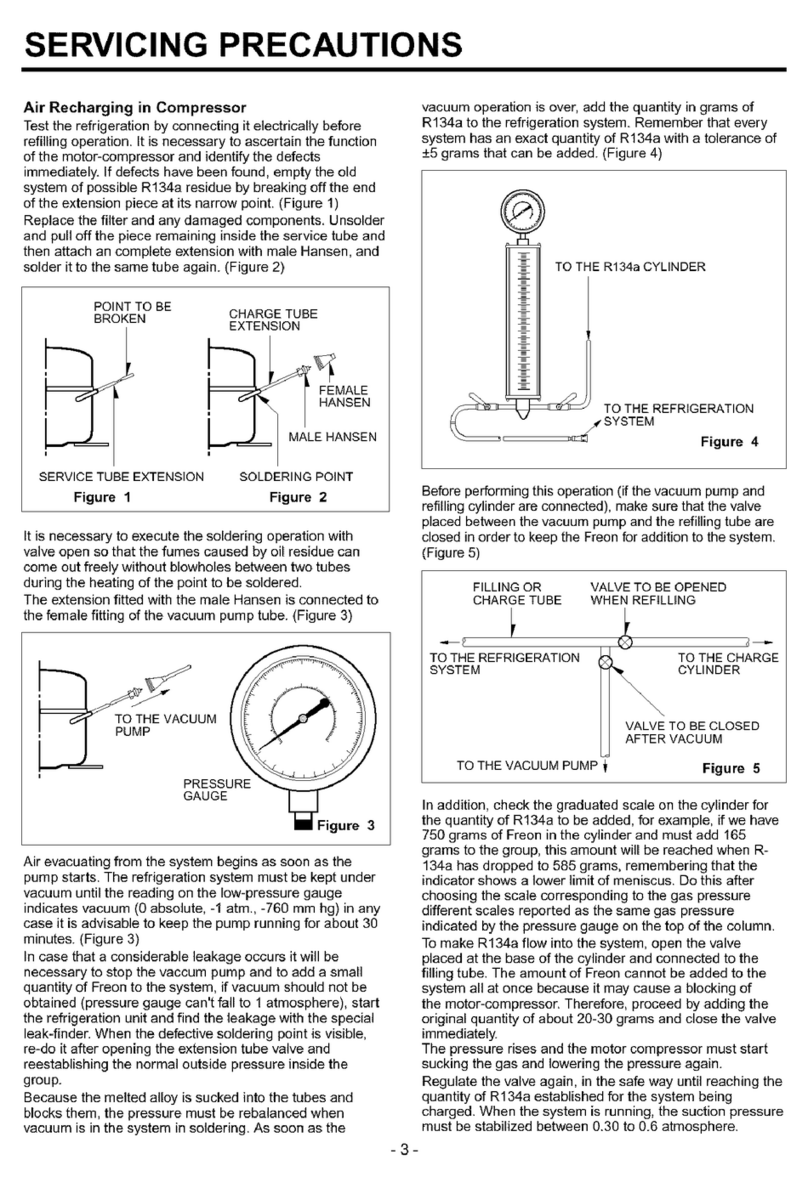21
How to use your
Refrigerator-Freezer
Refrigerator Compartment:
This compartment is meant for keeping drinks
and fresh food.
The inner temperature is quite equalized. Avoid
food touching inner walls, as the cold is being
produced in there and the food could partly get fro-
zen. On the other hand this would avoid a perfect
circulation of the cold air.
This appliance is provided with an automatic
defrosting divice. You therfore might find someti-
mes a fine layer of ice or water drops.
Useful Hints
Do not introduce any new food during a free-
zing period.
Do not put any newly introduced food for free-
zing near to already frozen food.
Wrap the food up properly or place it in her-
methic recipies before introducing it into the
freezer.
Do not introduce any hot food into the freezer.
Food and drinks of a strong flavour may pass
this on to others and affect their flavour. Wrap
them up adequately or put them into tight clo-
sing bags.
Follow the instructions given in the cook books,
freezing books and wrapping utensiles for better
conservation of food.
Freezer Compartment
This freezer, marked , is suitable for fre-
ezing food and permits long term storage of frozen
food. The appliance must be connected for at least 3
hours before introducing food.
Freezing of food
1... Place food on the upper grill.
2... Maintain food for at least 24 hours in that position.
The maximum quantity to be frozen within 24
hours is shown on the «Rating Plate», depending
on the model.
Conservation of frozen food
For a safe storage of food the temperature inside should
never rise above -18°C.
An ajustable thermostat is regulating this temperature
automatically.
Make sure the «Temperature Regulator» is on a
medium setting.
However, it may sometimes be necessary (due to poor
ventilation, high roon temperature, frequent opening of
the door) to graduate the setting of the «Temperature
Regulator».
In case of an accidental stop of the appliance or a power
cut proceed as follows:
Keep the doors closed at all events.
Try to find out for how long the failure will conti-
nue.
Once reestablished to normality:
A) If the freezer is fully loaded and the power failure is
less than the time indicated on the «Rating Plate» no
damage has been done to the food stored.
B) If the freezer is failed loaded the «rising of the tem-
perature» is reduced. If thawing has not yet started
proceed as said in previous point.
C) If thawing has started, consume the food inmedia-
tely, or cook it and then freezen it again.




